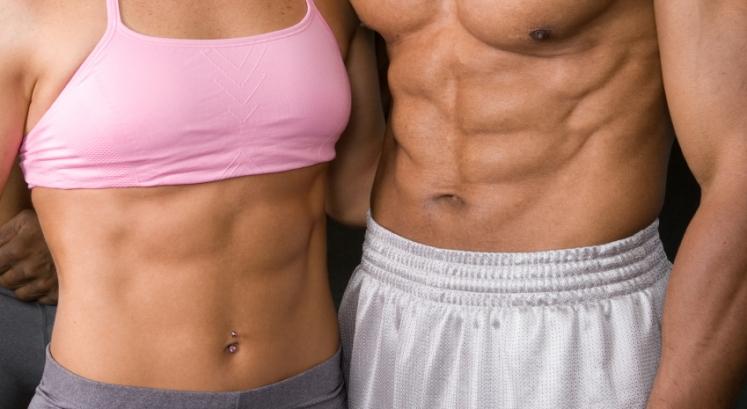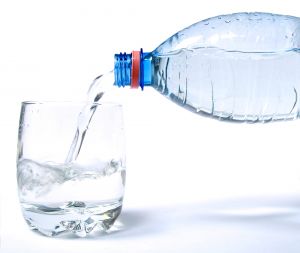How to get a lean body (fat loss)
 More then 70% of what we eat is burned by our muscles, even in rest. So even when you are not develop any activity our muscles burn calories (Energy Expenditure at Rest). Only a small part of our caloric intake is used as energy to move or exercise. The more muscles you have the more calories you burn while resting.
More then 70% of what we eat is burned by our muscles, even in rest. So even when you are not develop any activity our muscles burn calories (Energy Expenditure at Rest). Only a small part of our caloric intake is used as energy to move or exercise. The more muscles you have the more calories you burn while resting.
We also covered part of it here: //juicedmuscle.com/content/exercise-not-key-weight-loss
Ther are more ways of loosing weight with help of thermogenic supplements drugs like T3, clenbuterol or medication like phentermine etc. Also injectable compounds to loose stubbern fat on specific places like "Helios" will covered in other articles in the fatloss catagory thus keep an eye open for future articles.
Unfortunaly there are no shortcuts to fat reduction or to achieving a toned and sculpted body. Long term results can only be achieved by following an integrated bodybuilding and nutrition plan; in doing so you will reduce your body fat percentage and increase lean muscle mass.
You should not be so concerned with weight loss as it is more about body shape and it is the increase in lean muscle (which is heavier than fat) that plays a key part in any fat loss program.
Muscle Drives Your Metabolism
The amount of lean muscle you have directly affects your metabolism and it’s your metabolism that affects the shape of your body. Your metabolism is simply the rate at which your body burns calories. The higher your metabolism the more calories you burn and the more lean muscle you have the higher your metabolism. Muscle is in essence your fat burning machinery as it burns calories more effectively than fat even at rest.
Calorific intake
In order to reduce body fat you will need to achieve a calorie deficit i.e. by burning more calories each day than you consume - this is the only way to reduce fat!However, the calorie deficit must be kept reasonably small (approx. 250 calories per day) so you do not burn lean muscle whilst you are trying to burn fat.
Effects of Fasting (Reduced calorie diets / crash diets)
If calorie intake is severely reduced then your body will go into what is known as starvation mode, this will result in a slow down of your metabolism (in order to conserve energy), storing what calories you do consume as fat (for use in emergencies) and the breaking down of muscle (glycogen stores within the muscle) to be used as an alternative energy source, the consequential loss of lean muscle will then unfortunately result in a further slowing down of your metabolism.
NB: Once your basal metabolic rate slows down (due to the loss of muscle) you will burn off less calories whilst going about your daily routine and this is why most people who follow weight loss diets end up back at, or even larger than when they started, once they stop dieting due to having a slower metabolic rate caused by loss of lean muscle mass as apposed to loss of fat – giving rise to the term - 'yo yo' dieting.
Therefore try eating every 3 – 4hrs (5 – 6 times per day) as this will help maintain a higher metabolic rate, because every time you eat your metabolism will rise in order to process the food you have just consumed. You will of course need to be consuming the right type of foods i.e. those containing all the relevant macronutrients, vitamins amino acids etc. and a suitable balance of carbohydrates, proteins and fats, an ideal balance being approx. 50% carbohydrates, 30% proteins and 20% good fats (avoiding saturated, trans and hydrogenated fats).
This will allow you to keep your metabolism high while at the same time transforming the shape of your body with exercise.
NB: Your body needs to consume ‘good fats’ as amongst other things, they are used for cell & tissue repair, hormone synthesis and storing toxins which could otherwise damage vital organs..
Exercise
Exercise is known to decrease the risk of cardiovascular disease and diabetes, helps to lower blood pressure and decreases the risk of degenerative diseases such as arthritis. Other benefits include improved posture, improved mood and enhanced self esteem.
How Much Exercise?
Everyone should be active for at least an hour every day this could include such activities as: washing the car, taking the dog for a walk, walking into town and back etc.
In addition (& in an ideal world) structured exercise should be undertaken 3 to 4 hours per week. NB: 3 to 4hrs represents approx. 3 to 4% of your waking week i.e. the hours that you are awake.
For each hour you exercise you should try to reach an intensity whereby you have difficulty speaking your sweating & your heart rate is in a raised state for approx. 20 minutes. If you have aheart rate monitor your intensity should be showing around 75 to 95% of your maximum heart rate (again you can work at lower intensities, however, your results will take longer to achieve)
Resistance/ Weight Training
Resistance training is by far the best way to exercise to re-shape your body and increase your metabolism. By using weights, machines and even your own body weight to effectively work your muscles you can progressively stress them so they grow stronger.
As you increase your lean body mass you will increase your metabolism enabling you to burn fat faster even while you are sleeping.
There are many more benefits to resistance training than just burning fat. As resistance training strengthens muscles it also strengthens the supporting soft tissue fibres i.e. ligaments and tendons around the joints helping to protect your joints from the stresses and strains of an active lifestyle.
Aerobic Training
 Aerobic exercise is the type of exercise performed to train the heart, lungs and circulatory systems and usually involves the use of the large muscle groups over an extended period of time. Running, cycling, swimming, rowing and walking are all great aerobic exercises. Aerobic exercise is also great for metabolising fat burning as an energy source as apposed to the bodies glycogen stores (from carbohydrates).
Aerobic exercise is the type of exercise performed to train the heart, lungs and circulatory systems and usually involves the use of the large muscle groups over an extended period of time. Running, cycling, swimming, rowing and walking are all great aerobic exercises. Aerobic exercise is also great for metabolising fat burning as an energy source as apposed to the bodies glycogen stores (from carbohydrates).
There are many benefits of aerobic training, including increased lung volume, lowered resting heart rate, as well as fat loss. The additional benefit of undertaking aerobic exercise coupled with a degree of impact e.g. jogging / running is an increase in bone mineral density which strengthens bones & lowers the risk of osteoporosis in later life.
The recommended training zone (America College of Sports Medicine - ACSM) for fat burning is 60 – 70% of MHR (maximum heart rate), where MHR can be calculated as 220 minus your age.
NB: Whilst this is the theoretical ideal range for 'fat burning' because a larger percentage of the calories you burn off will be fat, however, there is a draw back - because you are working at a lower intensity you will burning off less calories overall! So if you are serious about weight loss then you need to be be working at a higher intensity (medical conditions permitting) i.e. there are no 'easy' options.
Nutrition
Nutrition has the greatest impact on fat loss. A balanced and supportive eating plan will not only help to improve your health it will also provide the optimal environment in which to burn fat. If your goal is to reduce body fat you must eat slightly fewer calories than you burn each day.
Fad diets simply don’t work in the long term due to improper nutrition and a failure to change exercise and eating habits for life.
A healthy nutrition plan doesn’t need to be complicated, keep things simple by eating a wide variety of nutritious foods including plenty of fresh fruit and vegetables, lean meats, fish and poultry and a variety of whole grains such as whole grain rice, whole wheat pasta and whole wheat bread.
Try to reduce your intake of alcohol, junk food and saturated fats & avoid trans fats & hydrogenated fats. Also try to avoid deep frying food, instead bake, steam, dry roast and stir fry.
Remember, fat is an essential part of our diet, helping to generate energy as well as being necessary for the health of various systems including digestion, nerves and hormone production. Fat also acts as a carrier for fat soluble vitamins A, D, E, and K.
 Hydration
Hydration
Keeping the body hydrated will enable you to burn fat faster and help the body to flush out stored toxins. Try to drink as a minimum 1.5-2 litres of fresh clean water per day, more needs to be drunk when exercising or when the weather is very hot.
Summary
By eating healthily, taking in slightly less calories than you burn, coupled with resistance training and aerobic training will help you burn fat & tone up:
* Consume approx. 250 less calories per day.
* Expend an extra 250 calories per day through exercise -
(equates to about 25 minutes at a good pace on treadmill).
* Eat a healthy balance of Carbohydrates, Protein & Fats - 50 / 30 / 20.
* Drink a minimum of 1.5 lts of water per day
* Eat regularly - every 3 - 4hrs.
* Eat plenty of fresh fruit & vegetables.
* Avoid processed foods where possible.
* Get sufficient sleep - 7 - 8hrs per night.
* Be active & exercise regularly!
Good luck!!
- Login to post comments


